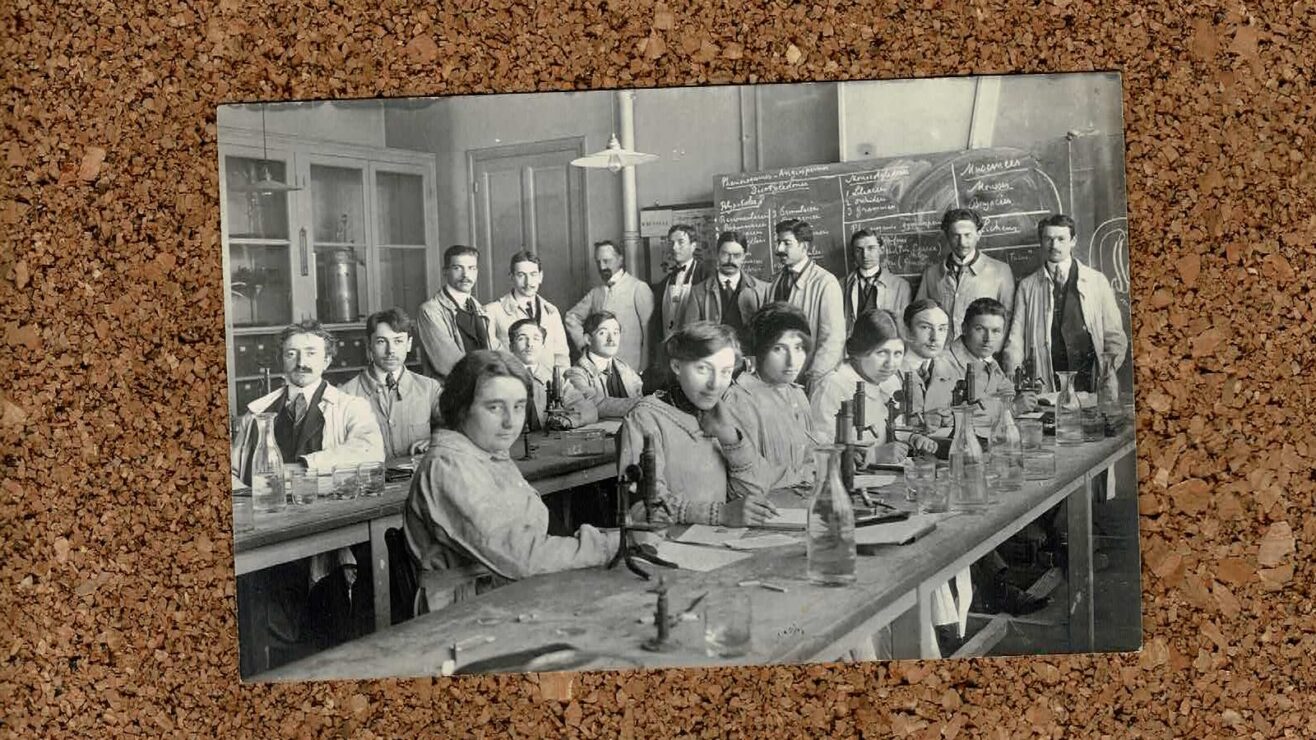The 1960s were an epochal era for higher education expansion, aligned with wider change in the air socially, culturally, politically and technologically.
The sixties saw two general elections in 1964 and 1966, compared to three in the fifties and four in the seventies. Both elections were Labour victories, led on both occasions by Harold Wilson. The 1966 election saw a comparative high point in references to higher education and universities across all parties.
The decade began with two major reviews of higher education: the Anderson report (1960) which standardised grants nationally, and the more well-known blueprint for higher education expansion, the Robbins Report of 1963. The Robbins report famously argued that “courses of higher education should be available for all those who are qualified by ability and attainment to pursue them and who wish to do so” and in general election party political manifestos, all major parties agreed. The prospect of a similar cross-party agreement on the future of higher education seems doubtful in 2024.
The 1960s manifesto texts made links with higher education and youth, regional and national devolution and public services and in particular the role of universities in training and educating teachers, which continued to be a shortage occupation following the provision of universal secondary education under the Butler Act of 1944. In the 1960s, new links were being made across Conservatives, Liberal and Labour between higher education provision and broader societal needs.
Times a changin’
In 1963 Bob Dylan sang that The Times They Are a-Changin’ – and they were. After the long period of economic austerity post-war, the 1960s live on in film and documentaries as liberatory socially, culturally and economically. Yet freedom did not come without a fight. The civil rights movement and Vietnam War protests in the US forged a resistance to inequality and conflict overseas, even as the UK saw the increase of racial tensions, and right wing politician Enoch Powell’s infamous speech in which he (incorrectly) predicted that interracial violence would lead to “rivers of blood”. Civil unrest broke out in France in 1968 with the occupation of universities and factories, and the UK also saw student activism and protest.
A post-war consensus was still lingering in the 1960s following the politically collaborative approach to the second world war. The welfare state and the formation of the NHS, free secondary schooling for all, social security and Keynesian full employment and a mixed economy of state and private enterprise endured.
The decade began with Sir Alec Douglas-Home in Number 10 Downing Street – the fourth Conservative party Prime Minister of the fifties and the last in 13 years of Conservative rule. In October 1964, Labour leader Harold Wilson formed a government with a slim majority of just four seats and just 18 months later in March 1966 held another general election achieving a majority of 98 seats.
Wilson’s leadership of the Labour party was in step with Dylan’s times a changin’. As the two polarising world views of capitalism and communism ratcheted up global tensions, with the Berlin wall erected in 1961 and the Cuban missile crisis in 1962, Wilson was a stark contrast to Alexander Frederick Douglas-Home, Baron Home of the Hirsel. Douglas-Home was born in Mayfair, an hereditary lord (which he gave up to be PM) and schooled at Eton. Wilson was born in Huddersfield, his parents were an industrial chemist and teacher and he won a scholarship to his local grammar school.
The growth of mass media meant that politics was changing too, and Wilson understood this, studying John F Kennedy in the US to craft a media persona which was youthful and change orientated. He wore a fashionable Gannex mac and was rarely seen without his trademark pipe – a centre ground between bourgeois cigars and proletarian cigarettes.
Harold Wilson was a sharp and polemic contrast to Douglas-Home in background but both trod the familiar path from Oxford University to 10 Downing Street. These differences chime with the changes of the decade. However, social historians do warn us not to fall into the nostalgic trap of picturing the whole nation as becoming socially and cultural liberal, listening to The Beatles in the Cavern and The Who and The Kinks on Carnaby street.
As Dominic Sandbrook has pointed out, the best-selling album of the sixties was not the innovative and ground breaking Sgt. Pepper’s Lonely Hearts Club Band or anything by the Rolling Stones or Bob Dylan – it was the Sound of Music Soundtrack. Be that as it may, for many, the decade was when “The era of empire and social deference was almost gone, and the postwar consensus was disappearing, too.”
Although from more humble beginnings than his predecessor, Wilson gained (the now popular qualification for PMs, but then a new course which he switched to from history) a PPE degree at Oxford and went on to lecture in economic history. In his final year at Oxford, Keynesian economics was becoming influential, and Wilson went on to work as a research assistant for the architect of the welfare state – William Beveridge. Wilson started, but didn’t complete a PhD at LSE. His research was interrupted by World War II. He didn’t resume completion of his thesis. Wilson’s role in the war effort was in the civil service. This influenced his decision to pursue politics and public service.
Expanding higher education
The 1964 Conservative Party manifesto, “Prosperity with a Purpose” is expansionist on education. In a section called “Opportunity for Youth” the text promises to raise the minimum school leaving age to 16 to provide a “wider” and “deeper” education, commit to an expansion of universities, colleges of advanced technology, higher technical institutions and teacher training colleges with 100,000 places by 1968 with more to follow, and a Youth Employment service to offer careers advice and expand industrial apprenticeships and training. The baby boomer generation was coming of age, with their numbers contributing to a new appreciation of the young adult phase of life. The 1964 Conservative manifesto promised modernisation of existing schools, new builds and increased higher education numbers would provide the extra teachers needed in schools.
Teacher shortages were also on the minds of the Liberal Party in 1964. Its manifesto “Think for Yourself – Vote Liberal” prioritised education for the country’s social future and pledged to double higher education places in the following ten years to meet the shortage in teachers. On the economy, the Liberals called for the “best brains of the country” from industry and universities to contribute to government.
Labour’s 1964 manifesto completed a tri-party consensus on the need for more teachers and that higher education would provide them. Labour went further than the Conservatives and the Liberals by bringing universities into a wider national economic growth strategy and as part of modernising social services:
[BQ]Labour will carry out a programme of massive expansion in higher, further and university education. To stop the “brain drain” Labour will grant to the universities and colleges of advanced technology the funds necessary for maintaining research standards in a period of rapid student expansion.
At the Labour Party conference in 1963, Harold Wilson delivered his now-famous “white heat of technology” speech:
in all our plans for the future, we are re-defining and we are re-stating our socialism in terms of the scientific revolution. But that revolution cannot become a reality unless we are prepared to make far-reaching changes in economic and social attitudes which permeate our whole system of society. The Britain that is going to be forged in the white heat of this revolution will be no place for restrictive practices or for outdated methods on either side of industry.
Wilson presented in typical pragmatic style a four fold programme of what must be done:
- Produce more scientists
- Keep them in the country
- Make intelligent use of them
- Organise British industry so that it applies scientific research more purposively to the national production effort
In his rousing and influential speech, Wilson fused science and technology with socialism, arguing that technology and automation cannot be left to the free market and should be harnessed for growth to succeed in global competition through national infrastructure.
With AI sure to feature in the 2024 manifestos, many parties may look to Wilson’s speech for inspiration. Until recently such claims feel like from another era. However, Shadow Chancellor Rachel Reeves’s recent Mais lecture outlined a new economic consensus of public infrastructure for growth as “securonomics”, aligning with US “Bidenomics” known more technically as supply-side economics. David Kernohan sees universities as key to this public infrastructure.
1966 and all that
In achieving only a four seat majority in 1964, the Labour Party was emboldened to call another general election just 18 months later, in which it expanded its majority and secured a Labour government for the remainder of the decade.
The Conservative Party manifesto of 1966, “Action Not Words: The New Conservative Programme,” continued along a similar track to 18 months earlier – expansion of higher education.
The Liberal Party manifesto of 1966 continued the consensus of growth for universities, claiming that Conservative and Labour were not funding expansion well enough. The Liberals went into much greater detail than the Conservatives, identifying issues with Labour’s university plans for the continuation of the dual system of autonomous universities and polytechnics under local authority control, and suggested a national network of regional councils to provide university oversight – a debate that anyone interested in the tertiary turn in contemporary higher education policy will sure want to revisit:
We reject the Labour Government’s long-term aim of two separate systems, one autonomous under the University Grants Committee and the other ‘public’ under the Local Authorities. The links between Universities and other institutions of higher education should be drawn closer together by exercising public control through Regional Councils rather than the 160 different Local Authorities.
The Liberal Party was also growing impatient that the University of the Air (to be the Open University) was not yet up and running to help solve teacher shortages with part-time courses and re-training.
In the most comprehensive assessment of the state of higher education of the three parties Labour’s 1966 manifesto comments positively about higher education expansion but also universities’ role in modernising the country through science and technology. The manifesto asks for a mandate to continue with Labour’s programme of modernisation.
References to universities and higher education form part of a wider vision of public infrastructure alongside hospitals, schools, civic buildings, leisure facilities and water all under a heading of “Building a new Britain.” The theme of teacher numbers is again re-emphasised and the expansion of universities, the colleges of education, and the leading technical colleges as well as support to “make a growing contribution in science, technology and social studies.”
Wilson’s own educational opportunities were afforded by many scholarships and paid work. Many of these opportunities gave him the financial security to pursue study and research – in one example from Ben Pimlott’s biography, Wilson was able to support his parents financially thanks to the scholarship when his father was out of work. This could be one of the reasons that Wilson was so determined to establish the Open University – one of, if not the greatest legacy of Wilson’s. The 1966 Labour manifesto promised:
We shall establish the University of the Air. By using TV and radio communal facilities, high grade correspondence courses and new teaching techniques, this open University will enormously extend the best teaching facilities and give everyone the opportunity of study for a full degree.
It will mean genuine equality of opportunity for millions of people for the first time. Moreover, even for those who prefer not to take a full course, it will bring the widest and best contribution possible to their general level of knowledge and breadth of interests.
At the time the Open University was radical and hard fought to achieve. Part-time higher education and distance learning has seen a decline in numbers from the 2010s onwards and more providers and platforms offer distance and digital options which have impacted upon the Open University. In 2024 England’s Lifelong Learning Entitlement could be leveraged to widen access and meet skills shortages. Many have argued however, that the LLE is not nearly as far-reaching and radical as the Open University.
We can’t leave the 1960s without mentioning football and England’s 1966 World Cup win. The 1966 general election was in March ahead of England’s win at Wembley in July. This Summer Scotland and England head to Euro 2024 in Germany and Team GB head to Paris for the Olympic Games. Could success be a national feel good bump ala 1966 or 2012 for the coming 2024 general election?
The imaginary of a feelgood generation and change might not have reached every corner of the UK but there is no doubting that, as Bob Dylan sang, the times were changing. By the end of the 1960s the post-war cross party consensus was ending, going into the economic challenges of the 1970s. When it comes to higher education however, we might look to the Beatles to sum up the cross-party mood and consensus on university expansion – We Can Work it Out.













